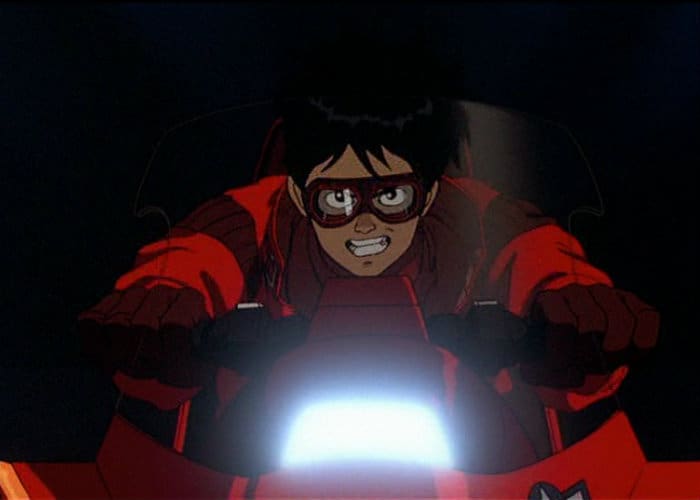Welcome to The Queue — your daily distraction of curated video content sourced from across the web. Today, we’re watching a video essay that explores the animation techniques that give the 1988 anime film Akira its unprecedented visual quality.
Of the number of expletives that rush through your head the first time you witness Katsuhiro Ôtomo‘s 1988 masterpiece Akira, one, surely, must be this: “f**k this looks good.”
To put it bluntly: no animated film looks like Akira. From its opening moments, the scale, staggering detail, and cinematic visual storytelling are undeniable. A gargantuan explosion swallows up the dwarfed metropolis of Tokyo; our intrepid hero, Kaneda, flicks through the warm glow of a glittering jukebox. Motorcycles leave glowing long-exposure trails simmering in their wake. It is immediately apparent: there’s something special about how this (highly influential) film was animated.
Without saying too much (because while this film is nearly 35 years old, I’m in no position to give up its secrets), Akira follows a young teen whose best friend accidentally crosses paths with a top-secret military project.
Believe it or not (and it’s very hard to believe), Akira was Ôtomo’s animated feature film debut.
Based on his own 1982 manga of the same name, the film is unusually ambitious for an anime feature of its time, and as the video essay below details, a number of interlocking factors contributed to its quality. While many of these largely fall under the “Katsuhiro Ôtomo being an absolute maniac” clause, some factors are more tangible (if equally odd): shooting on 70mm, pre-scoring the voice-actor performances, intentionally mimicking live-action cinematography, and refusing to cheat or cut corners in any way.
But seeing is believing, so without further ado, enjoy the following insight into why Akira looks so damn good:
Watch “The Techniques That Gave Akira Its Unprecedented Quality”:
Who made this?
This video essay on why Akira‘s attention to detail is so remarkable is by CinemaTyler. The Brooklyn-based creator has been providing some of the most in-depth analyses of auteur-driven cinema on YouTube for some time now. You can check out their YouTube channel here. CinemaTyler’s scholarship on Stanley Kubrick, particularly 2001: A Space Odyssey, is noteworthy, and absolutely worth seeking out.
More videos like this
- Here’s another taste of CinemaTyler’s work: a video that explores how Warner Brothers’ marketing team drummed up hype for 1989’s Batman.
- And here’s another video essay from CinemaTyler on the controversy and miraculous survival of Jean Renoir’s 1937 anti-war film, La Grande Illusion.
- Here’s the always eloquent Nerdwriter on how Akira exemplifies the idea of animating with light.
- And here’s a wildly insightful video from APLattanzi on why Akira decimates the myth that animation must take place at 24 frames per second.
- Finally, here’s Super Eyepatch Wolf with a look at Akira‘s massive cultural impact.

